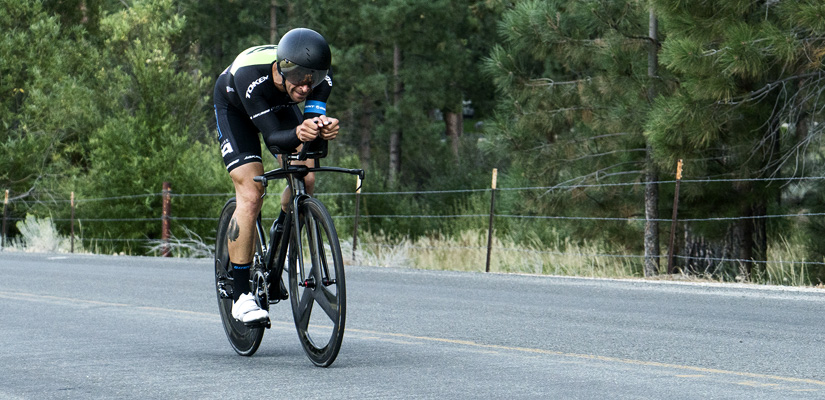How Much Does Aerodynamic Drag Affect My Speed?

Answer: A lot. Structured training will get you faster, but structured training with a concern for aerodynamic positioning will have the greatest impact on your speed.
What is Aerodynamic Drag?
Aerodynamic drag, otherwise known as aerodynamic resistance, plays a major role in determining how fast we can push ourselves on our bikes. How much so is a matter of an object’s (that’s you) drag coefficient (Cd) and its frontal area (A) — or the slipperiness and size of the shape you and your bike present to the wind. Multiplied together, CdA gives us a measurement of our aerodynamics. The higher this figure, the harder we have to work to fight air pressure and maintain speed.
For perspective, a sphere has a drag coefficient of 0.47, a cube’s is 1.05, and a streamlined body (like the wing of a plane) drops way down to 0.04. Then the bigger the object, the bigger its frontal area and the higher its CdA.
To further compound our challenge, the faster we go, the less friendly the power-speed relation becomes. Some downright cruel physics dictate that the power necessary to propel us through the air increases by the square of our speed. This means that in order to double our speed, we have to increase our power 4 times over!
Want another way to grasp this unfair trade? On a flat road, a 3% increase in power will only net you a 1% increase in speed. Bummer…
Learning from the Pros
According to Daniel Healey of Tinkoff/BMC, CdA of elite riders using aero bars ranges between 0.18-0.25. For good amateur riders, that number climbs to more like 0.25-0.30. So not only are the best riders more powerful, they’re more aerodynamic. And the fastest have nailed that balance down better than their competitors.
During non-TT days at the Tour de France, riders will spend about 90% of their energy overcoming air pressure as they nudge their speed upwards of 50kph/30mph. If they’re in the draft, which is where most of them will try to be, this expenditure decreases substantially. But creep along solo at any more than 14kph/9mph on a flat road and the wind is inarguably your fiercest foe.
Grappling with the Laws of Physics
Physics doesn’t care whether you’re a pro or a noob. So allow me to steer you toward some ways that all bike riders can cheat the laws of the universe.
Mathematically, 100 grams of aerodynamic drag is equal to 1 second over a kilometer. This means that by marginally reducing our resistance to the air through which we and our bikes travel, we can gain time! So how do we do this?
There is actually a whole lot of easy gets, and if you have an hour or two to kill you should head over to YouTube and check out Specialized’s Win Tunnel channel. Here you’ll find numerous wind-cheating solutions, debunk a few aero myths, and geek out on how some very simple ideas can earn you a little more speed for your hard work.
Final Thoughts
Boil it down and our struggle is to maximize our power through intelligent training, maximize our aerodynamics via realistic reductions in CdA, and strike a proper balance in the process. Sadly, we can’t just curl into a tiny ball and jam down on the pedals with great force and expect everything to gel.
Getting things right takes practice, and the best way to get that practice is during training. This is the big reason I’ve included practice time trial workouts in all 40K TT plans. The more familiar and comfortable you are with pacing at your highest sustainable power while in your aero position, the more prepared you’ll be the give your best effort come race day.
For more on how to train for faster time trials, check out my post from yesterday discussing how to train for a time trial and take a look at the tips shared here on how to get faster without aero equipment.
For more answers to your cycling training questions, listen to our podcast Ask a Cycling Coach — the only podcast dedicated to making you a faster cyclist. New episodes are released weekly. Yes, we know that’s addiction territory 😉